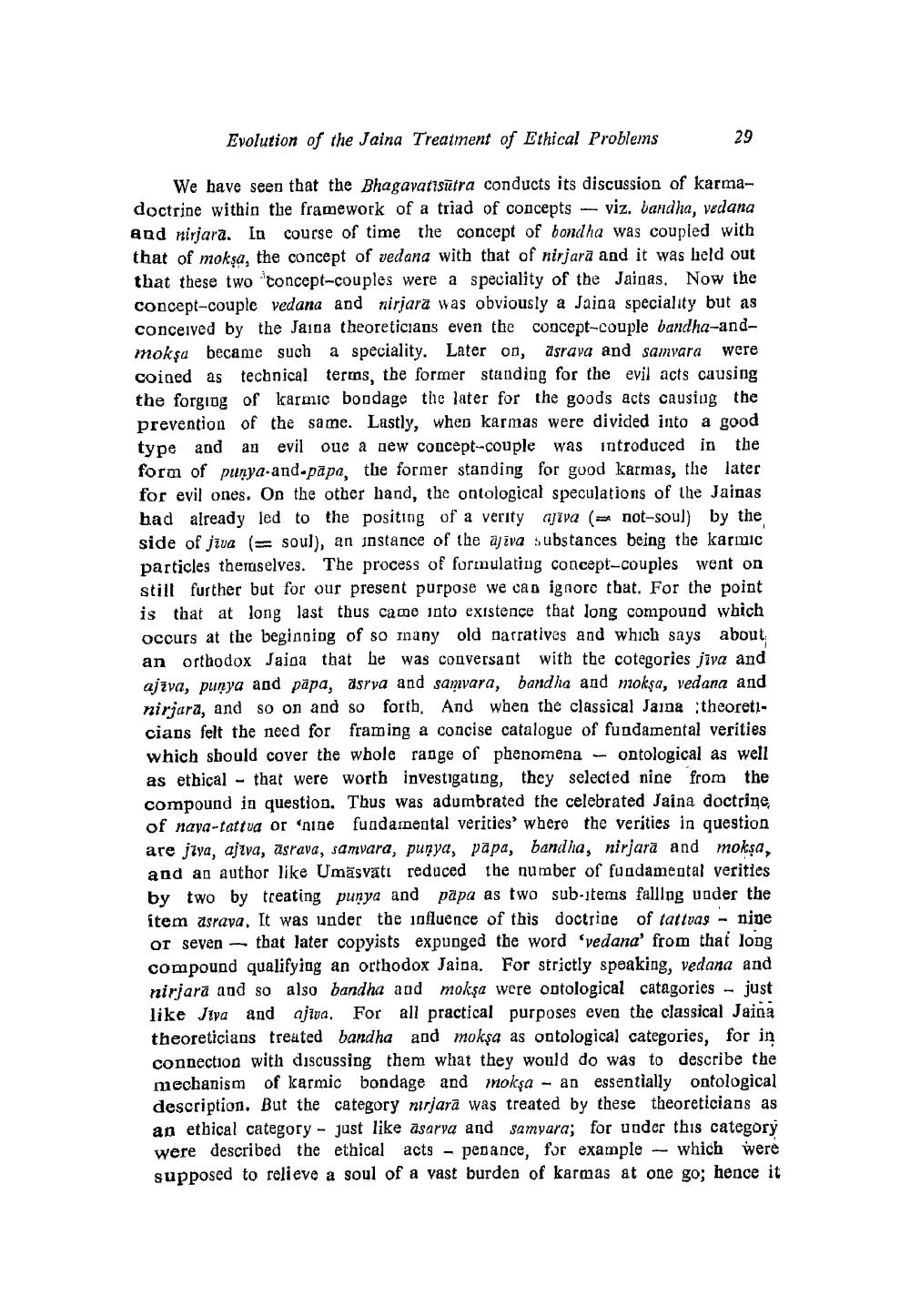________________
Evolution of the Jaina Treatment of Ethical Problems
We have seen that the Bhagavatisutra conducts its discussion of karmadoctrine within the framework of a triad of concepts viz. bandha, vedana and nirjara. In course of time the concept of bondha was coupled with that of moksa, the concept of vedana with that of nirjara and it was held out that these two concept-couples were a speciality of the Jainas. Now the concept-couple vedana and nirjara was obviously a Jaina speciality but as conceived by the Jaina theoreticians even the concept-couple bandha-andmokşa became such a speciality. Later on, asrava and samvara were coined as technical terms, the former standing for the evil acts causing the forging of karmic bondage the later for the goods acts causing the prevention of the same. Lastly, when karmas were divided into a good type and an evil oue a new concept-couple was introduced in the form of punya-and-papa, the former standing for good karmas, the later for evil ones. On the other hand, the ontological speculations of the Jainas had already led to the positing of a verity ajiva ( not-soul) by the side of jiva (= soul), an instance of the ajiva substances being the karmic particles themselves. The process of formulating concept-couples went on still further but for our present purpose we can ignore that. For the point is that at long last thus came into existence that long compound which occurs at the beginning of so many old narratives and which says about an orthodox Jaina that he was conversant with the cotegories jiva and ajiva, punya and papa, asrva and samvara, bandha and moksa, vedana and nirjara, and so on and so forth. And when the classical Jaina theoreticians felt the need for framing a concise catalogue of fundamental verities which should cover the whole range of phenomena ontological as well as ethical that were worth investigating, they selected nine from the compound in question. Thus was adumbrated the celebrated Jaina doctrine of nava-tattua or nine fundamental verities' where the verities in question are jiva, ajiva, asrava, samvara, punya, papa, bandha, nirjara and moksa, and an author like Umäsvati reduced the number of fundamental verities by two by treating punya and papa as two sub-items falling under the item asraya, It was under the influence of this doctrine of tattvas - nine or seven that later copyists expunged the word 'vedana' from that long compound qualifying an orthodox Jaina. For strictly speaking, vedana and nirjara and so also bandha and moksa were ontological catagories - just like Jiva and ajwa. For all practical purposes even the classical Jaina theoreticians treated bandha and mokşa as ontological categories, for in connection with discussing them what they would do was to describe the mechanism of karmic bondage and mokşa - an essentially ontological description. But the category nurjara was treated by these theoreticians as an ethical category - just like asarva and samvara; for under this category were described the ethical acts penance, for example - which were supposed to relieve a soul of a vast burden of karmas at one go; hence it
1
29
A




